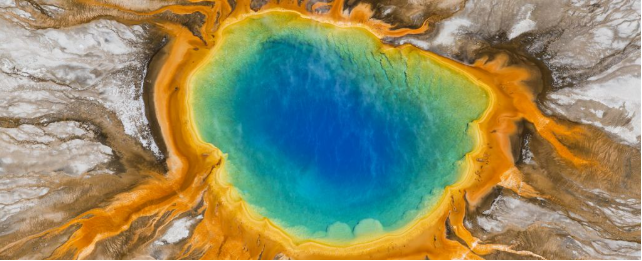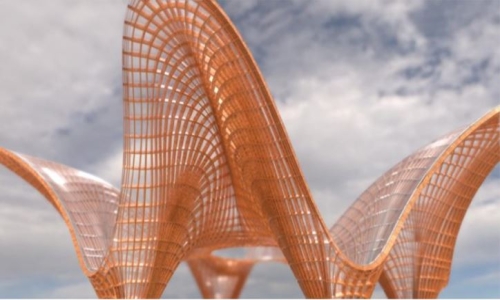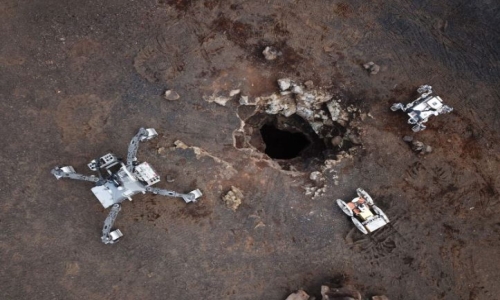


 3:1:13
3:1:13  2025-01-02
2025-01-02  1005
1005

Volcanic activity bubbling away beneath the Yellowstone National Park in the US appears to be on the move.
New research shows that the reservoirs of magma that fuel the super volcano’s wild outbursts seem to be shifting to the northeast of the Yellowstone Caldera. This region could be the new locus of future volcanic activity, according to a team led by seismologist Ninfa Bennington of the US Geological Survey.
"On the basis of the volume of rhyolitic melt storage beneath northeast Yellowstone Caldera, and the region's direct connection to a lower-crustal heat source, we suggest that the locus of future rhyolitic volcanism has shifted to northeast Yellowstone Caldera," they write in their paper.
"In contrast, post-caldera rhyolitic volcanism in the previous 160,000 years has occurred across the majority of Yellowstone Caldera with the exclusion of this northeast region."
Yellowstone is one of the world's largest super volcanoes; a vast, complex, dynamic region of Earth's crust that is both spectacularly beautiful and deeply dangerous.
In the past 2 million years, Yellowstone has undergone three huge, caldera-forming eruptions – those that create the cauldron-like basins on Earth's surface when a subterranean magma chamber empties and collapses in on the hollowed-out cavity. These huge eruptions have been interspersed with smaller eruptions.
The caldera-forming eruptions at Yellowstone are sourced from reservoirs of rhyolitic melt. That's silica-rich magma, the volcanic equivalent of granite, sticky and viscous and slow-moving, and thought to be stored in vast volumes underneath the Yellowstone region.
Previous studies presumed the rhyolitic reservoirs were supported by deeper reservoirs of basaltic magma – molten material that has a much smaller silica content than rhyolite, but abundant iron and magnesium. It's also significantly less viscous than rhyolite, but also denser, and the way it conducts electricity differs to rhyolite.
This latter difference in properties gave Bennington and her colleagues the tools they needed to probe the magmatic reservoir contents beneath the Yellowstone Plateau.
One way to monitor activity beneath Earth's surface involves measuring surface variations in the planet's magnetic and electric fields. This is known as magnetotellurics, and it's particularly sensitive to the presence of subsurface melts.
Bennington and her colleagues carried out a wide-scale magnetotelluric survey across the Yellowstone Caldera, and used the resulting data to model the distribution of the melt reservoirs lurking therein.
Their results revealed that there are at least seven distinct regions of high magma content, some of which are feeding into others, at depths between 4 and 47 kilometers (2.5 to 30 miles) beneath the ground – down to the boundary of the crust and mantle.
The most interesting melt storage was in the northeast. There, huge reservoirs of basaltic magma in the lower crust heat and maintain chambers of rhyolitic magma in the upper crust. These chambers of rhyolitic magma contain an estimated melt storage volume of around 388 to 489 cubic kilometers – almost an order of magnitude higher than melt storage zones to the south, west, and north, where previous eruptions took place.
This volume, the researchers note, is also comparable to the melt volume of previous caldera-forming eruptions in Yellowstone.
The rhyolitic caldera-forming eruptions, the researchers note, were interspersed with smaller, basaltic eruptions within the caldera. However, it's unclear exactly how these kinds of eruptions work. The team's research suggests that the rhyolitic magma chambers have to cool completely before the basaltic magma can move in.
Exactly when and how these future eruptions are going to take place will, the researchers say, require further analysis.
Reality Of Islam |
|

A new NURBS

A research

Researchers
 9:3:43
9:3:43
 2018-11-05
2018-11-05
10 benefits of Marriage in Islam
 7:5:22
7:5:22
 2019-04-08
2019-04-08
benefits of reciting surat yunus, hud &
 9:45:7
9:45:7
 2018-12-24
2018-12-24
advantages & disadvantages of divorce
 11:35:12
11:35:12
 2018-06-10
2018-06-10
 6:0:51
6:0:51
 2018-10-16
2018-10-16
 5:58:12
5:58:12
 2021-12-18
2021-12-18
 2:13:43
2:13:43
 2022-05-27
2022-05-27
 8:25:12
8:25:12
 2022-03-09
2022-03-09
 3:42:22
3:42:22
 2021-12-24
2021-12-24
 9:39:36
9:39:36
 2022-12-28
2022-12-28
 10:43:56
10:43:56
 2022-06-22
2022-06-22
bahlool & the throne of haroun rashid
 8:20:35
8:20:35
 2018-06-21
2018-06-21
 5:41:46
5:41:46
 2023-03-18
2023-03-18
| LATEST |